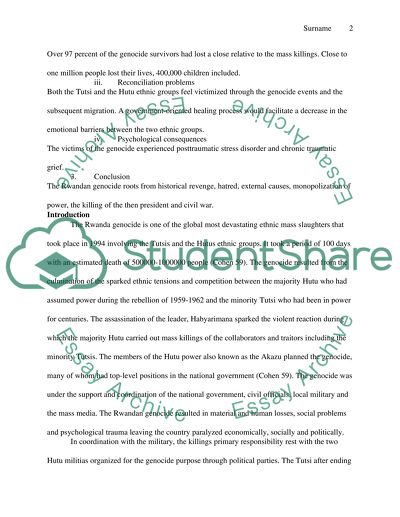Cite this document
(Evil and Its Symbols: The Rwandan Genocide Term Paper, n.d.)
Evil and Its Symbols: The Rwandan Genocide Term Paper. Retrieved from https://studentshare.org/history/1496885-evil-and-its-symbols-final-take-home-exam-essay
Evil and Its Symbols: The Rwandan Genocide Term Paper. Retrieved from https://studentshare.org/history/1496885-evil-and-its-symbols-final-take-home-exam-essay
(Evil and Its Symbols: The Rwandan Genocide Term Paper)
Evil and Its Symbols: The Rwandan Genocide Term Paper. https://studentshare.org/history/1496885-evil-and-its-symbols-final-take-home-exam-essay.
Evil and Its Symbols: The Rwandan Genocide Term Paper. https://studentshare.org/history/1496885-evil-and-its-symbols-final-take-home-exam-essay.
“Evil and Its Symbols: The Rwandan Genocide Term Paper”, n.d. https://studentshare.org/history/1496885-evil-and-its-symbols-final-take-home-exam-essay.


